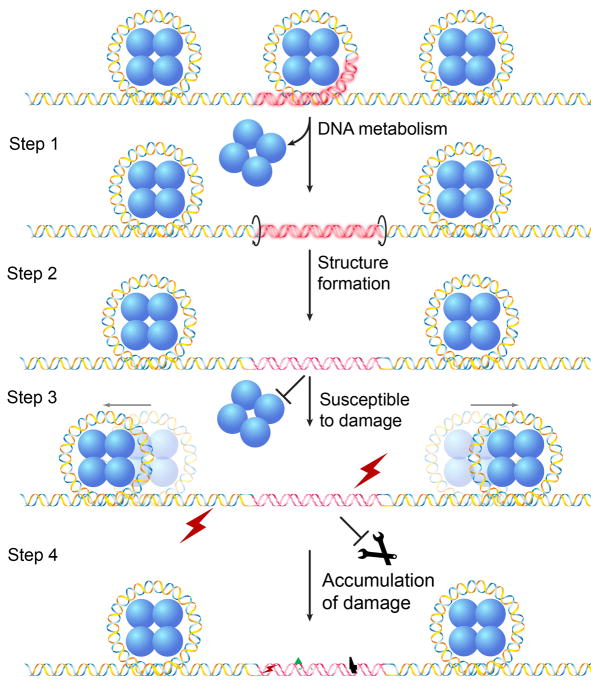Figure 3.
“Accumulation of DNA damage in non-B DNA structures” model. Unwrapping of a non-B DNA-forming sequence (highlighted in red) from the histone core during DNA metabolism, e.g., DNA replication, transcription, or repair (Step 1), facilitates the non-B DNA conformation (Step 2, shown in the figure is a Z-DNA structure). The non-B DNA conformation is more susceptible to DNA damage and the damage in the non-B DNA region is more resistant to repair (Step 3), leading to accumulated damage in this region (Step 4).

